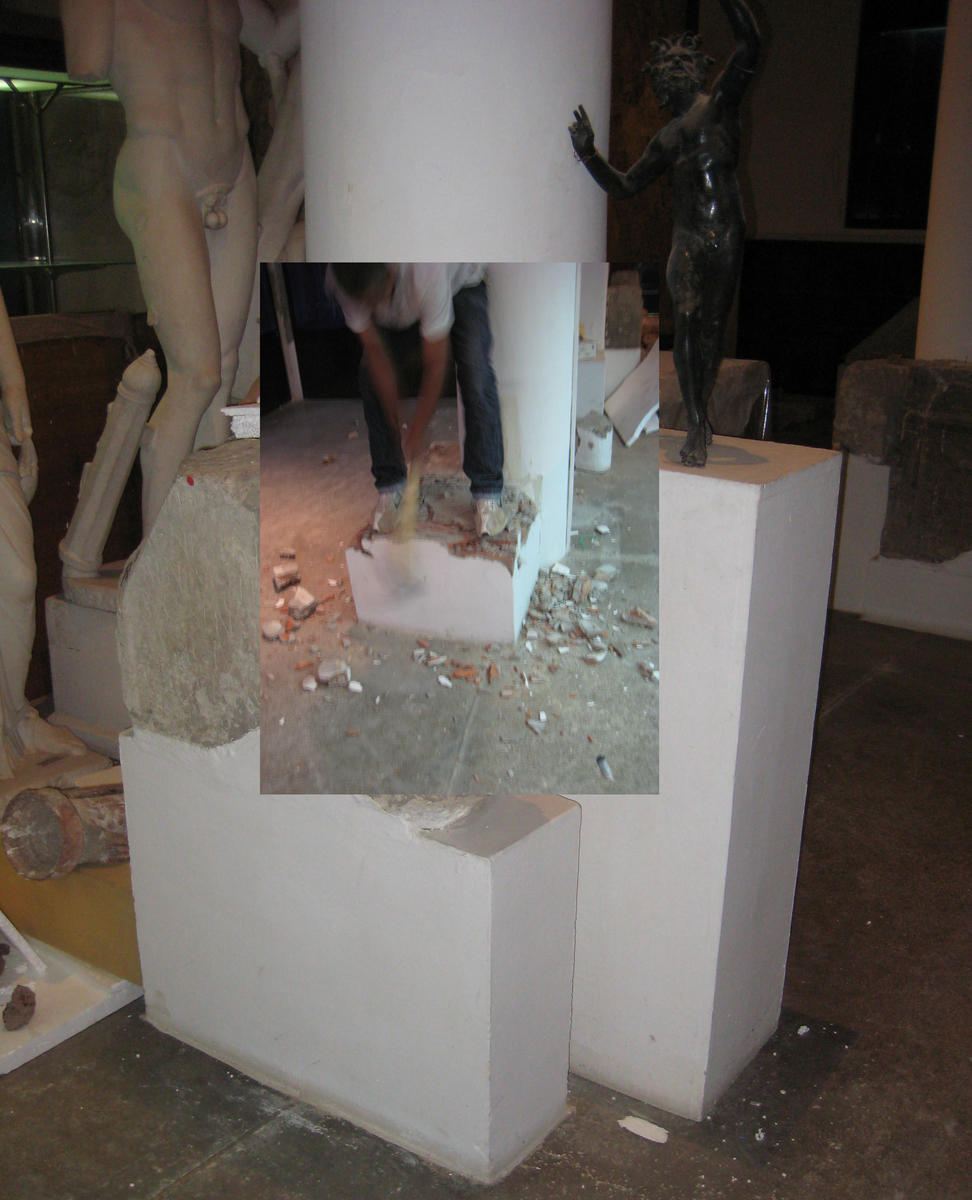
In 2009, Los Angeles–based artist Álvaro Perdices traveled to Oran, Algeria, with a friend working on the restoration and preservation of cultural artifacts at the Musée National Zabana. The museum was founded by the French colonial government back in 1879 and named after French soldier and archeologist Louis Demaeght. For nearly a century it served as a showcase for that regime’s knowledge of prehistoric archaeology, ethnology, antiquities, minerals, paleontology, and Maghrebi history and culture. Little changed when Algeria declared its independence from France in 1962. The museum may have symbolically excised Demaeght from its name and from the architectural frieze on the building’s facade, rechristening itself after the revolutionary martyr Ahmed Zabana, however the contents of the museum remained unchanged. When a man by the name of El-Hadj Meshoub took over the museum’s directorship, he undertook a plan to fundamentally change the organizational logic of the museum, exhibiting its holdings in a manner unlike Western conventions. Perdices was commissioned to document the process, along with the institution’s transformation.
Perdices spent a number of months in Oran, working alongside museum staff and the NGO Restauradores Sin Fronteras (RSF). The result, Zabana Inshallah, currently in progress, is not so much a documentary as a videographic intervention in the process of remaking the museum, an exploration of the legacy of colonial power as evidenced by its stylistic impositions. Perdices paid special attention to the archeological wing of the museum, which was being redesigned by the Brazilian architect Gustavo Santos, who had devised a radical, non-hierarchical exhibition scheme. The artist filmed conservationists at work while, in the same room, laborers hired to clear out the space deinstalled and dismantled antiquities. Perdices was struck by the crude, rough handling of objects that one would normally see locked in vitrines and climate-controlled environments; it appeared as if symbolic acts of destruction had permeated the museum. Preservation was made all the more difficult by the lack of reverence for these artifacts, which symbolized both the cultures from which they came and Algeria’s colonial history, but not, it seemed, the country’s present or future.
One chapter of Zabana Inshallah dwells on a single, fleeting moment: Perdices, breaking from the role of documentarian, records the workers pummeling the museum’s built-in plaster and concrete pedestals with sledgehammers. These violent movements are slowed down to the point at which each movement is exaggerated, the men’s brute force is amplified, and their grunts reach new sonic registers. Perdices heightens the destructive energy and dramatizes what was otherwise a casual act, elevating it to the level of performance art, or even a kind of vernacular institutional critique. Zabana Inshallah provides a real glimpse of what has mostly been imagined in art: the museum in ruins.
Another chapter of Perdices’s cultural profile of Oran takes place in and around the city’s École des Beaux Arts. Perdices’s camera slowly pans around the educational facilities, which were built in the now outdated classical style of the colonial era. While the museum is finally rethinking the conditions under which its collections came into existence, the school’s architecture and décor are unchanged. The walls are cluttered with facsimiles of Western masterworks. There are no original works here, only models evincing the classical rules of form, composition, and proportion, to be emulated by young Algerian students. One photograph pinned to a wall shows a student in three-quarter view, suggesting that Algerian subjects willfully inhabit these roles. The history of art, and its consumption in Algeria, seem to follow directly from these depictions.
By pairing these two venues, Perdices reveals how Algeria’s cultural institutions have stayed true to their original modernizing missions and continued to serve nationalistic ends. Even in the process of reinterpretation and reevaluation, the legacy of imperialism weighs heavily. The colonial project and its multiple legacies are reflected in the preservation of each artifact, the reordering of each relic, and the shattering of each pedestal.